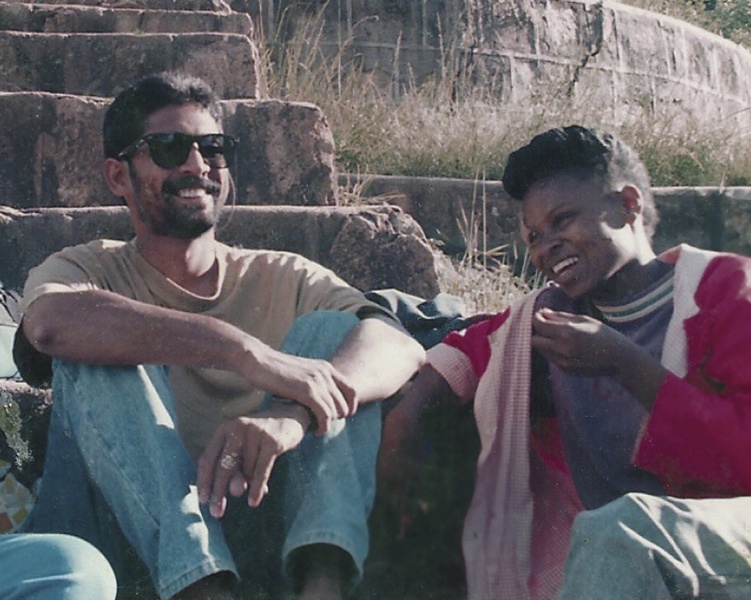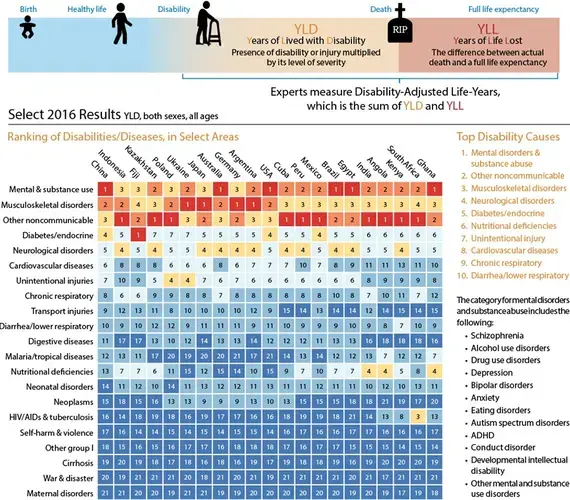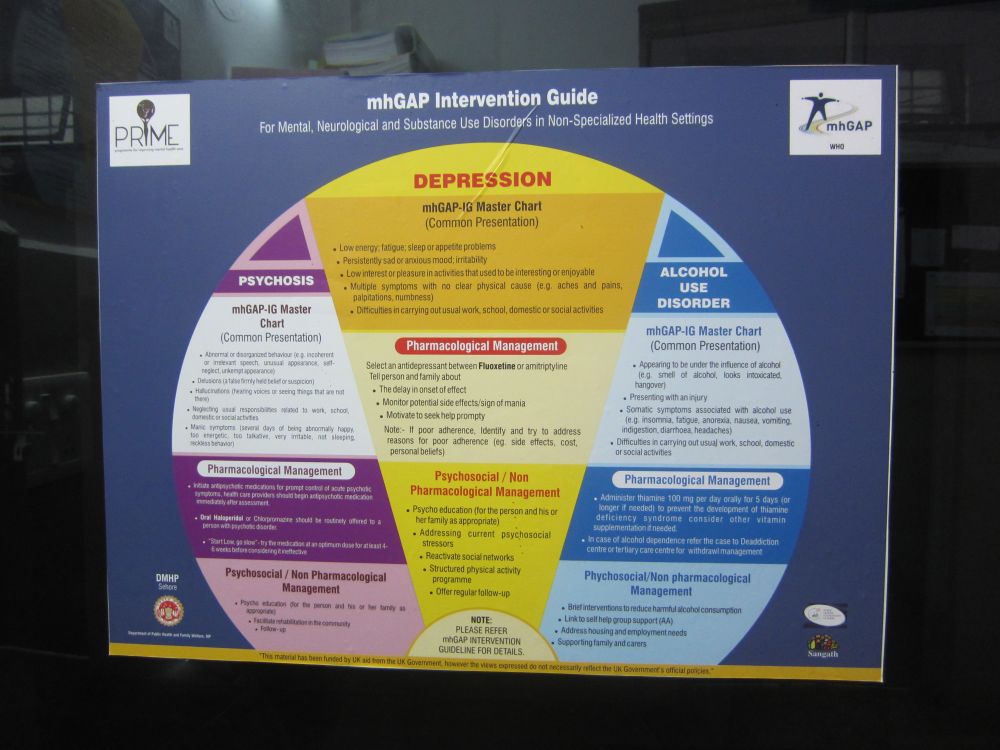
It’s 1998. A 34-year-old, soft-spoken but intense Indian psychiatrist named Vikram Patel sits at a table in a conference room at the World Bank in Washington, D.C. Flanking him are several other mental health experts, looking out at a group of economists. Over the course of several hours, Patel and his colleagues carefully build a case supporting World Bank investment in mental health programs in developing countries, where little to no care for the mentally ill is available. People with untreated illnesses are unable to work. They are often rejected by their communities. Sometimes they’re chained up. Treatment programs could return these people to society.
The economists aren’t impressed. Where are the numbers showing the problems are widespread, and that illnesses can be treated? Patel is stunned by the lack of compassion. “It just seemed that all that mattered was the science, the numbers,” he says now. In 1998, there would be no help from World Bank.
But the meeting did accomplish one key thing. It energized Patel and others who were fighting to get mental illnesses recognized as a major global health challenge. The time had come to build an unassailable knowledge base to prove what they believed in their bones — that mental illnesses, like bipolar disease, schizophrenia and depression, are medical issues, not character weaknesses. They take a major toll on the world’s health, and addressing them is a necessity, not a luxury.
Building that base was not going to be an easy task.
Welcome to "The Zoo"
For Patel, it all began five years before that fateful World Bank meeting. He’d just finished his medical and psychiatric training at top institutions in India and England. Eager to see the world, he landed a job at a hospital in Harare, Zimbabwe.
Patel expected to see a conventional psychiatric ward, maybe a bit run-down, with beds for patients receiving treatment. What he saw on his first day was much worse. His driver passed the main hospital and pulled up to a compound about 200 yards away, encircled by a nearly 5-foot-high metal fence. Hospital workers called it “the zoo.” Patients were dressed in white sacks with holes cut out for their heads and arms. Some were hanging on the gate or running toward the fence. Some were smiling, some were screaming, some were babbling. In a hospital ward inside the compound, some patients were tied to their beds.
In that moment, Patel realized he had to rethink his plans of practicing the psychiatry he’d been taught. Nothing he had learned was going to be of much use here.
At the time, there were other concerns on the global health agenda. More than 14 million people had HIV, and the incidence was increasing with no end in sight. Two million people died of malaria that year, mostly children. Mothers were dying during childbirth, children were dying from diarrhea, vaccination rates were woeful. Mental illnesses were dismissed, indistinguishable from poverty.
In Harare, Patel’s patients had no clinical psychologists or social workers, little or no access to drugs and no counseling. “Any model of mental health care that I had been trained in was simply not compatible with what I saw in Zimbabwe,” he says now. “And then of course I later discovered this was also the case in the whole of Africa and most parts of Asia as well.”
Patel saw people with all kinds of illness, particularly depression. In a survey, published in 1998, he found depression in a quarter of people who visited primary care clinics in Harare, and in a third of people who relied on traditional healers. A random sample showed depression affected 12 percent of women in the community.
Health workers and patients at the Harare hospital didn’t use the term depression; there’s not even a word for it in the local Shona language. But Patel saw the sleep disturbances, extreme sadness, weight changes and inability to experience pleasure that spell depression in rich countries. He saw some of the same triggers as well: illness, financial insecurity, marital strife, death of a loved one, lack of social support.
His first step was to handle what was right in front of him. He could offer medication when it was in stock and talk therapy when interpreters were available. And he educated health care providers in how to do a lot with a little. During his two years in Zimbabwe, he was working in a near-vacuum. The world just didn’t seem to care.
But as Patel was working in Zimbabwe, word was beginning to spread about the work two researchers had presented to the World Health Organization (WHO). They had used epidemiology — the science of counting illnesses — to come to a preliminary but astonishing conclusion, one that would eventually revolutionize the field of global mental health.
Tallying Global Disease
Christopher Murray and Alan Lopez were reaching that point that college students know all too well. It was late on Nov. 30, 1992. They had a presentation to make the next day at WHO, and they weren’t quite ready. For a year and a half, with the help of some bright Harvard University undergrads, the two epidemiologists had been working hard on a massive study about the global toll of diseases.
Lopez was with WHO, and Murray was an assistant professor at Harvard. Lopez’s wife was away on a business trip, so for a week or so they had been living like science bachelors, holed up in a little upstairs study of the Lopez house on the shore of Lake Geneva in Switzerland. They worked all day, went out for dinner at a local restaurant like they did every evening and returned home to work into the early morning hours.
After loading everything they’d need for their analysis into a computer, the pair paused to look out over the dark lake. At about 4 a.m., Murray hit a key on his laptop.
The results were a first — a region-by-region calculation of the global burden of disease. They’d figured out not just how many people died from specific diseases, but also how much each disease affected people’s lives, making them sick or disabled. They pulled off their presentation, with its astonishing findings.
One of the biggest surprises was that half of the 10 leading causes of disability were from psychiatric conditions: depression, alcoholism, bipolar disease, schizophrenia and obsessive-compulsive disorder. Depression alone was the leading cause of disability in every region of the world except sub-Saharan Africa, and outranked the death and disability caused by anemia (a sign of malnutrition), heart disease, cancer, malaria and lung disease.
“Chris and I just looked at each other and we said, ‘That’s amazing,’ ” says Lopez. In the published analysis that appeared a few years later, they concluded that the global burden of psychiatric conditions had been “seriously underestimated.”
With little money for treatment, diagnosis of mental illnesses in poor countries was not a priority. Many people doubted that diagnostic tools, mostly questionnaires, were accurate. Because of stigma, people and even governments were loath to admit mental illnesses existed at all. Few countries kept good track of whatever case numbers there were.
Lopez and Murray included mental illnesses in their analysis because they are key to public health, along with infections, noncommunicable diseases and maternal and child health. “We had over 100 diseases and injuries to quantify,” says Lopez.
They had gathered what national and regional mental health surveys they could find. In the many places where information didn’t exist, they made estimates, using numbers from similar places, adjusted for the population. For some countries, they used surrogate measures. For example, each known instance of suicide might represent a certain number of cases of depression.
They and a team of experts weighed each illness based on severity. Depression got a 0.6, so every 10 years lived with depression had the same impact on the total burden of disease as six years of life lost. Deafness was 0.2, so a decade with deafness counted as two lost years.
The first estimate in 1992 was far from exact. They redid the study in 2000, 2010 and 2016, with better data and more precise models, and they included anxiety disorders, eating disorders and other conditions.
The methodological changes brought the numbers down a little, but however you count it, it’s still high, says Lopez. In the 2010 calculation, mental disorders and substance abuse accounted for more days lived with disability than any other cause, including HIV/AIDS and diabetes. They remained at the top of the list in 2016, just nosing out other non-communicable diseases.
But that first discovery had little impact. When Patel presented those figures six years later, the World Bank economists were unmoved, and they saw no need for investment in mental health treatment. It was going to take more than epidemiology to persuade members of the global health community to think about mental illnesses. It was going to take evidence that the illnesses were treatable, and that the treatments were affordable.
Finding the Evidence
In 2005, Patel was working with Sangath, a nonprofit Indian health care organization he co-founded nearly a decade earlier. He also was spending a lot of time in London doing research and clinical work, and teaching at the London School of Hygiene and Tropical Medicine. He still felt the growing field of mental illness research needed attention, and at the global level.
He talked with colleagues Martin Prince of King’s College London and Shekhar Saxena of WHO. Late one night, he fired off a letter in the name of all three to Richard Horton, the editor-in-chief of the journal The Lancet. Patel asked Horton to consider a special issue about mental illnesses.
“I hardly expected a reply,” Patel remembers. Less than 24 hours later, a note popped up in Patel’s inbox. It was an invitation from Horton to talk.

At the meeting, Patel, Prince and Saxena made a strong case that there was enough scientific evidence and enough need for discussion that a special issue on mental illnesses was warranted. Horton agreed. “My feeling was the time had come,” he recalls. “Global mental health was totally ignored. It was very clear we needed to jump in and seize this opportunity.”
Still, while they had an idea of the global impact of mental disorders, in 2005 research on diagnosis and treatment in underserved areas was thin. Just a handful of randomized controlled trials — the gold standard in medical science — had been done in low-resource environments. In 2003, Paul Bolton of Johns Hopkins University and colleagues published a study in the Journal of the American Medical Association showing that group therapy could treat people with depression in Uganda. That same year, Ricardo Araya of the U.K. showed success helping poor women with depression in Santiago, Chile. Studies from other places showed that group therapy, antidepressants, individual counseling and talk therapies all worked.
Patel published the results of a clinical trial on drug and psychological treatment, and he was working on other trials that assessed whether laypeople could be effective counselors. Could they help people with depression, schizophrenia or alcoholism understand their illness? Could the lay counselors teach their patients that taking a walk, or talking with their counselor, or taking their medication could help them get through a bad spell?
In 2007, The Lancet published its first special issue on mental disorders, which included descriptions of these trials and more. Dozens of randomized controlled trials since have shown clear benefits in diagnosing and treating mental illnesses. “I was surprised to see the size of the effect,” Patel says now. “They were much bigger than I thought, in some cases bigger than you’d seen in the West.”
In January 2017, The Lancet published two more studies of people in developing countries: One group had moderately severe to severe depression; a second group had alcoholism. The analyses used economics to determine the cost effectiveness of therapy provided by lay counselors. It’s a wonky process, but it had a clear and simple conclusion: Using lay counselors to provide and deliver therapy was an economic win. (See “When Treatment Works,” page 34.)
Effects of Poverty?
What criticism there has been comes from a field called psychiatric (or psychological) anthropology, which considers how mental conditions play out within different cultures. Derek Summerfield, a consultant psychiatrist with the British National Health Service, is one of the few people to speak out against the premise that mental illnesses are common in developing countries. In 2012, Summerfield and Patel were both invited to give talks at McGill University. Patel’s talk was titled “Why mental health matters to global health.” Summerfield’s talk was titled “Against ‘global mental health.’ ”
Summerfield said that global mental health amounted to Westerners telling people in developing countries what was abnormal and what was not. He said it involved exporting treatments that don’t necessarily work well, and intimated that the pharmaceutical industry was a little too interested.
Today, Summerfield says he’s even more convinced that the issue for people with depression is really just poverty. “This is all ridiculous,” he says, adding that those with depression “are not pointing to their mental health. They are pointing to their poverty and lack of rights.”
Patel says he shares the concerns about poverty, and about pharmaceutical companies. He doesn’t take money from drug companies, and his trials focus on counseling and behavior-modifying therapies provided by Indians. Local laypeople who are attuned to local culture are the caregivers.
When Patel first went to Zimbabwe in 1993, he believed in conditions like schizophrenia and epilepsy. But he himself expected that most of the cases of “depression” would be what Summerfield thought — a result of misery rather than a psychiatric disorder. He changed his mind after two years. “Telling people that they’re not depressed, they’re just poor, is saying you can only be depressed if you’re rich,” he says.

On the Map
In April 2016, Patel was one of about a dozen mental health luminaries seated at a long table in front of a packed room in Washington, D.C. It was a satellite meeting to a big annual International Monetary Fund conference, and it was the first-ever joint meeting of the World Bank and WHO on mental illness and global development.
For Patel, the meeting tapped memories of that World Bank meeting in 1998 where economists pooh-poohed the idea that it should get involved in mental illness treatment. Eighteen years later, with much of the science now in place, this talk to the World Bank felt more like a victory lap.
Patel took the microphone and smiled at the global mental health advocates and the economists in the audience. “It’s just magical to be here celebrating several days in which our community can share a message of hope for perhaps one of the most neglected areas of global health,” he told them.
The World Bank is now financing mental health treatment projects in various countries; supporting meetings on the importance of population-wide mental health to development; and researching the magnitude of the challenge and ways to address it.
That swanky meeting room in Washington was half a world away from one of Patel’s success stories. Anita Shaky is now 27 years old and lives in a modest home in a small village outside Bhopal, India. A few years ago, Shaky wasn’t sleeping or eating. Her clothes were filthy, her hair was a mess, and she often argued with her family and the neighbors.
Her parents took her to a local hospital and to a traditional healer, but nothing was working. Then her parents heard that a nearby health center offered a program run by the Public Health Foundation of India and Sangath, Patel’s health care organization, and that a neighbor’s son had gotten help there. The health center diagnosed Shaky with schizophrenia and provided her with anti-schizophrenia drugs and multiple visits from a lay counselor.
Now, her sari is spotless, her eyes sparkle, and the screams are replaced with shy giggles when she’s asked if she’s going to marry soon. Her days consist mostly of sleeping late when her mother lets her, and helping in the kitchen and around the house. “Only when asked,” her mother notes with a happy grin.
Patel admits that back in 1998, he and others had been asking the World Bank economists to take on faith what he and his colleagues had seen in the field. At the time, there was zero evidence from the developing world for the value of diagnosing or treating mental illnesses.
“And now we have literally dozens and dozens of randomized controlled trials across a range of conditions in low-resource settings using low-cost human resources,” he says, “and they’re backed by economic data of the cost effectiveness of these interventions.” At the 2016 meeting, WHO presented its own analysis. For every $1 invested in scaling up depression and anxiety treatments around the world, there’s a $4 return on investment — people are able to work and are more productive.
“There’s just growing recognition virtually everywhere that these are issues that no society can continue to afford to overlook and neglect,” says Tim Evans, the World Bank’s senior director of health, nutrition and population.
Patel, now a professor of global health at Harvard Medical School, is looking ahead to how treatment could work on a large scale. His wish list includes researching how to use digital technologies to deliver care, as well as exploring new diagnostic and treatment techniques, such as wearable apps that measure activity and sleep.
Ask Patel what he thinks has resulted from the creation of a scientific basis for global mental health, and he’ll give you a small smile. “I certainly think there’s been a transformation in the awareness of mental illnesses as genuine causes of human suffering for rich and poor alike,” he says.
And admitting there’s a problem is a big first step.









